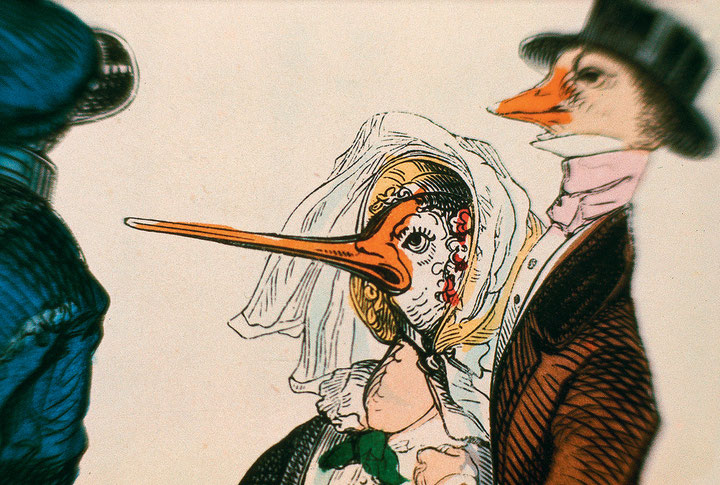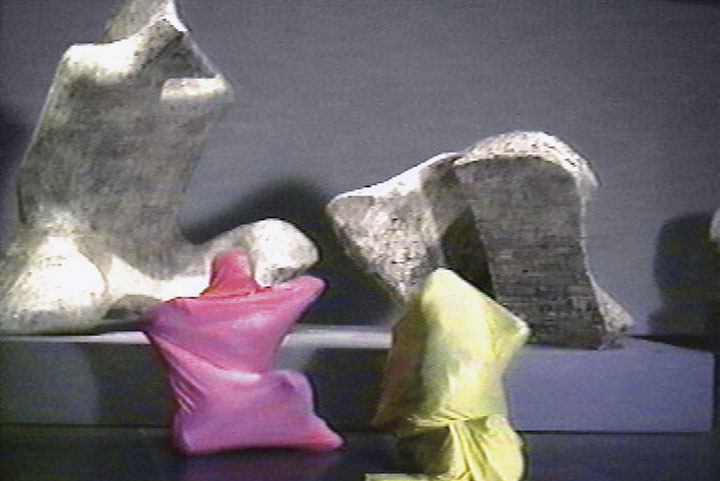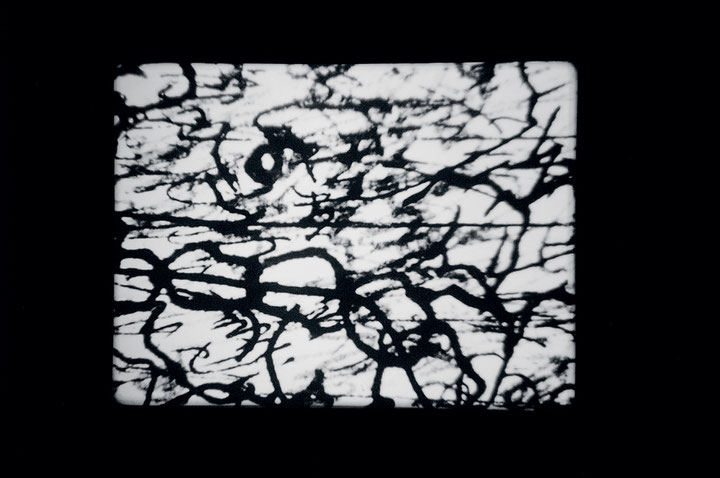A multi-part exhibition project on the topic of animism has examined issues regarding the positioning of human beings in the world as seen from different perspectives.1 The discourse on this subject, which was recently also condensed in a reader,2 is extremely wide-ranging and complex, but has a persistent appeal. I am recapitulating some of the main stances here in order to explore this appeal more closely, also in the light of a profound, multi-layered critique of anthropocentrism.
Isabell Stengers' plea, for example, adopts a critical take on science in its bid to win back. animism and to use its potential in new ways. This call can be combined with Bruno Latour's criticism of the duplicity of a modernity that is merely postulated on the premise of an inanimate material. Eduardo Viveiros de Castro, finally, provides a rich supplementary set of tools with a change in perspective that turns objects into subjects. In his account, the main task when attempting to gain a more comprehensive understanding of our relation to the world – one going beyond the Western models – is to decolonialise thought, i.e. to abandon the Eurocentric, colonialist, anthropocentric position of superiority. Viveiros de Castro maintains that no observations can be made from the standpoint of an ethnologist setting out to visit »primitive« horizons. The idea of human autocracy and superiority is also rather unproductive when wanting to explore larger contexts or cosmogonies.
Rather, a kind of testing process is needed here in which >the others< are not just those who >think< differently, but also those who are capable of questioning the significance that we accord to thought. 3 Stengers compares the ruthlessness of the Western scientific discourse with regard to those who think differently with the witch hunts of the early modern era. She sees the similarity in the enthronement and vehement defence of a world-view that purports to be rational and whose dominance depends primarily on the subdivision into separate areas of knowledge. According to Stengers, true art in the sciences consists in coming up with questions that in their turn can be questioned, i.e. that are situated in a relationship entered into by objects of research and those researching them. Even with regard to the non-verbal reservoirs of knowledge, such as those found in art, it is important, in this account, to recognise the premised clear borders as constructions. As Bruno Latour notes, the »moderns« writhe uncomfortably at the confrontation with the animists because this encounter makes it clear to them how deeply they themselves are caught up in non-verbal and transgressive traditions or cultures - and they suddenly feel themselves addressed by something they have learnt to denigrate.4 Stengers and Latour thus do not argue against rationality, but against a separatist, autocratic rationality that tries to exclude all influences that do not match its definition of what is rational. That which is reassembled from the various parts purports to represent the world. The fact that this representation lacks the living element and things that defy analysis is something well known in the field of art: art works that are analysed and dissected down to the last atom are no longer art works.
The credo of modern science still maintains that we are deceived by our senses and by our unconscious desires. Science of this ilk has to defend itself against the onslaught of the imagination, Stengers says. What is more, this type of science forgets that, as it is conveyed by means of words, it is always tainted by the ambivalent characteristics of rhetoric. In a living world, subjectivity, emotion, direct impressions should not be excluded: Our senses are not made for detached cognition, but for participation, a non-theoretical (theory: detached, isolated contemplation) awareness that shares the metamorphotic capability of things that draw us or fall back into unmoving availability according to the form of our participation – but which never disappears.5 So the question is not so much whether too much life is attributed to our surroundings, as conventional objections to animism suggest. In fact, we obviously credit it with too little life. If that which changes in the environment has a history, then it can potentially be the actor and subject of its own or of a joint history. In the belief system of the type of modernity of which Latour speaks, however, there is always an autocratic division into animate and inanimate, which also considers the unmodern side to possess fewer rights.
It is precisely in this sense that one can understand Stengers' call for the »reclamation of animism«: as an admission of the living nature of our surroundings. As a desire for more soulfulness than is conceded by the ascetic, rationalistic world-view, which, in highly theatrical manner, represents humans as standing alone before a huge gap. By claiming sole supremacy over all living creatures, Stengers says, humans purport to leave the fold of nature, and by so doing, to gain everything that separates them from animals: consciousness, emotions, goal orientation, rationality. But how can it happen that – after a reluctant recognition of an evolutionary continuity between the various living creatures – the wonderful gift of rationality suddenly emerges as a distinctive characteristic? Was it a neuronal storm that gave rise to the superior brain of homo sapiens sapiens?
At any rate, denying the living nature of other creatures, and thus also their ability to act, is not a way of escaping the danger of being influenced by them. Viveiros de Castro sees the pervasion of the Self and the Other as the point of departure for a mythology that precedes the division into human and non-human forms of existence. The challenge consists in taking over a point of view in which humans are seen as the fundamental form of being: all animal beings come from the human sphere, which gives them intentionality and subjectivity. “If being human is the common fundamental state of both humans and non-humans, this also means that the soul or the spirit – the subjective part of being – is a universal, unconditional a priori (especially because the souls of all non-humans are human-like), while the physical appearance becomes something particular, conditional, a posteriori.”6 It is possible to have dealings with another being only if one credits this being with a kind of subjectivity, reflexivity and relationality. In this way, an object becomes a subject, or, in connection with a subject, becomes capable of communication. “How can subjectivity be present on the subject and the object side at the same time?”, Félix Guattari asks. “Of course, it has always been so.”7 He works with the idea of an unconscious that constantly reshapes itself amid the flowing intermeshing of subjectivities, reacting not only to human inputs. This is where the anthropocentric dividing line dissolves. The fear that those who no longer accept humans as the world's main reference point are enemies of humans and of their intellectual potential can be read as a modernist insistence on rationalistic dichotomies such as: rationality, subjectivity and ability to act only befit humans and: emotions and the influencing of these is something that is only possible and allowable between humans.
The call for a different definition of subjectivity turns out to be closely connected with discussions about animistic practices. The issue here is the challenge described by Guattari “to return to an animistic conception of subjectivity and to reconceive the object, the Other, as a possible carrier of some dimensions of subjectivity, for example by means of neurotic phenomena, religious rituals or aesthetic phenomena”8. These and other perspectives will certainly fuel the ongoing discussion.
1 Versions of the exhibition were to be seen in the M HKA or the Extra City Kunsthal, Antwerp (2010), in the Kunsthalle Bern (2010), the Generali Foundation, Vienna (2011) (see the review in springerin 2/2012) and in the Haus der Kulturen der Welt, Berlin (2012).
2 Irene Albers/Anselm Franke (ed.), Animismus. Revisionen der Moderne. Zürich: Diaphanes 2012.
3 Isabelle Stengers, Den Animismus zurückgewinnen, in ibid., p. 113.
4 See Bruno Latour/Anselm Franke, Engel ohne Flügel. Ein Gespräch, in Albers/Franke, Animismus, p. 97ff.
5 Stengers, Den Animismus zurückgewinnen, p. 121.
6 Eduardo Viveiros de Castro, Perspektiventausch, in Albers/Franke, Animismus, p. 75f.
7 Quoted after Angela Melitopoulos/Maurizio Lazzarato, Maschinischer Animismus, in Albers/Franke, Animismus, p. 279.
8 Ibid.
Translated by Timothy Jones




